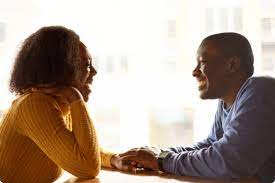This approach not only fosters user trust but also enhances the reputation of online gaming as a reliable and engaging activity in the Indian market. Lopebet is a prominent name in the online gaming landscape of India, offering a secure and user-friendly platform. With its innovative features and a wide selection of games, it ensures an exceptional experience for players. Combining reliability and entertainment, it has become a preferred destination for gaming enthusiasts.
Online casino sites offer a wide variety of casino game online to cater to different preferences and interests. Betway is one of the most recognized international betting platforms, known for its wide selection of sports markets, casino… Taking advantage of the bonuses, the player can win and withdraw his winnings to his bank card. Whether you’re a fan of poker, baccarat, or video poker, there are numerous card games to choose from. These games challenge your skills and strategy while providing the potential for substantial winnings. At the service of users – bank cards Visa, MasterCard, Maestro with a minimum deposit, payment systems, payment terminals.
Microgaming offers diverse slot games with innovative themes, while NetEnt excels in cutting-edge slots. Play’n GO presents unique titles such as Book of Dead, and Evolution Gaming specializes in delivering an authentic live dealer casino experience. These collaborations enhance the overall quality and diversity of games at LopeBet. In today fast-paced world, mobile accessibility is a critical aspect of online casinos. LopeBet Casino recognizes the need for a seamless gaming experience on mobile devices and has optimized its platform to cater to players who prefer gaming on the go. In this overview, we’ll explore Lope Bet mobile optimization, including the mobile website and the dedicated Lope Bet Mobile App.
Lopebet Casino Details
Is online gambling illegal in US?
While gambling is legal under U.S. federal law, there are significant restrictions pertaining to interstate and online gambling, as each state is free to regulate or prohibit the practice within its borders.
Embarking on the journey of online casino gaming in India opens up a world of entertainment and opportunities. By understanding the nuances of game selection, odds, bonuses, and responsible gaming practices, players can navigate this exciting world safely and enjoyably. LopeBet casino provides robust customer support to ensure players have a seamless gaming experience.
- Typically the casino will double the money the player deposits but it is not unusual to have a 200% bonus where the casino will treble the money deposited.
- This risk-free exploration builds confidence while ensuring an enjoyable experience.
- If you want to enjoy the spirit of adventure, you should play this device.
- Its free bonus structure ensures accessibility and encourages users to explore games without financial commitments, making it an excellent starting point for enthusiasts in India.
- These points contribute to advancing through different loyalty tiers, specifically at levels 10, 20, 30, 40, 50, 60, 70, 80, 90, and 100.
In this rapidly growing digital realm, our platform has firmly established ourselves among the world’s top-tier business magazines. Familiarise yourself with the game mechanics by starting with smaller bets. This strategy allows you to understand the Aviator game online without risking a significant portion of your bankroll. Mastering Aviator involves understanding its straightforward yet captivating gameplay mechanics. Currently, there is no specific LopeBet promo code required to access these bonuses.
These bonuses are crafted to provide risk-free access to popular games, ensuring players can enjoy their time without immediate financial commitments. The appeal lies in the seamless process and immediate access to gaming without financial commitments. For users seeking a free signup bonus no deposit casino India, platforms like casinos remain a trusted choice, ensuring fairness, security, and entertainment.
ric India Bookmaker Review for Betting on Sports Online in 2022
While Aviator offers a stress-free gaming experience, encountering issues is possible. Here are solutions to some common problems to ensure uninterrupted gameplay. Spribe Aviator is one of the many free casino games in India that can be enjoyed in demo mode. Get acquainted with Aviator’s mechanics without risking real money, perfect for beginners.
Fill in the required fields, including your email address and password, and follow the prompts to complete your registration. Once registered, you can log in and make your first deposit to start playing. The main purpose of the resource Lope.bet is to provide users of legal age with high-quality up-to-date information in the sphere of gambling and betting on a free-of-charge basis. Lopebet Casino offers bonuses such as a welcome bonus, a bonus package for the first https://lope-bet-casino.in/ deposit, monthly promotions, and free spins. Its popularity is due to a simple interface and the opportunity to get a big winnings in the casino.
Mobile Gaming Experience at Casino Online Platforms
The live casino games at LopeBet casino are designed to provide players with an engaging and entertaining gaming experience, with high-quality graphics and innovative features. The games are hosted by professional dealers who interact with players in real-time, creating a social and interactive atmosphere. Players can also chat with each other during the games, adding to the overall excitement and enjoyment. With the rise of online gambling platforms, players in India can access classic online casino games like Rummy and Teen Patti, as well as modern online casinos featuring international favorites.
LopeBet Casino prioritizes customer satisfaction with its efficient customer support options. Players can seek assistance through a convenient online chat feature or a 24/7 hotline. The responsive support team is readily available to address queries, provide guidance, and resolve any issues promptly. Lopebet Casino utilizes modern technologies to ensure an engaging gaming experience while prioritizing reliability and security. Clients have access to popular and widely-used payment systems, as well as a convenient and fast mobile application for both iOS and Android smartphones.







